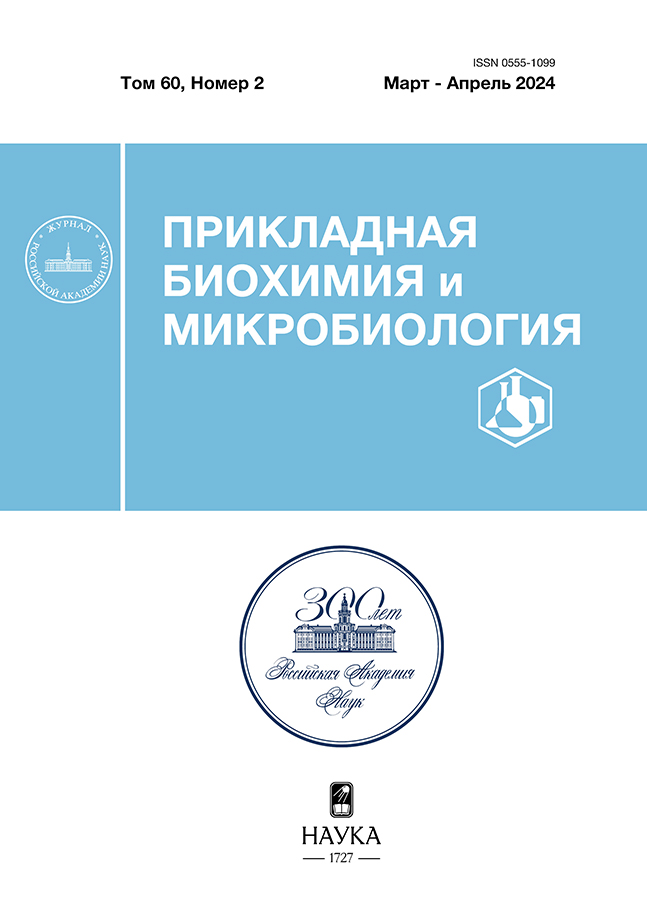Obtaining chitosan from chitine-containing uzbekistan raw materials and research of antimicrobial properties
- Autores: Milusheva R.Y.1, Akhymbetova G.D.1, Rashidova S.S.1
-
Afiliações:
- Institute of Polymer Chemistry and Physics of Academy of Sciences of the Republic of Uzbekistan
- Edição: Volume 60, Nº 2 (2024)
- Páginas: 167-176
- Seção: Articles
- URL: https://rjonco.com/0555-1099/article/view/674565
- DOI: https://doi.org/10.31857/S0555109924020063
- EDN: https://elibrary.ru/GAGJUR
- ID: 674565
Citar
Texto integral
Resumo
The optimal conditions for the isolation of valuable natural biopolymers were revealed. chitosan from cysts of Artemia parthenogenetia in the Aral Sea and from pupae of the silkworm Bombyx mori. Chitosan (Chs) was obtained from cysts of A. parthenogenetia with a molecular weight of 89 kDa, degree of deacetylation (DDA) — 72% and solubility — 81.62%. It has been shown that it is possible to isolate Chs from silkworm pupae of sufficient purity with different molecular weights and DDA depending on the synthesis conditions and the degree of purification. Bombyx mori Chs has a higher molecular weight of 100–160 kDa, a high DDA — up to 90% and a solubility of 88%. IR spectroscopy, X-ray diffraction and elemental analysis have shown the purity of the isolated Chs from various sources. In chitin from
A. parthenogenetia cysts of the Aral Sea, two types of modifications α and β with corresponding syngonies are observed, which confirms its polymorphic structure. The antibacterial activity of B. mori Chs has been shown, which tends to expand the spectrum of suppressed bacteria with increasing concentration and have a bactericidal effect on both gram-negative and gram-positive bacteria. Chs B. mori had an immunostimulating effect on living organisms, which allows us to recommend drugs based on Chs to strengthen the immune system.
Palavras-chave
Texto integral
Sobre autores
R. Milusheva
Institute of Polymer Chemistry and Physics of Academy of Sciences of the Republic of Uzbekistan
Email: rumilusheva@gmail.com
Uzbequistão, 100128, Tashkent
G. Akhymbetova
Institute of Polymer Chemistry and Physics of Academy of Sciences of the Republic of Uzbekistan
Email: rumilusheva@gmail.com
Uzbequistão, 100128, Tashkent
S. Rashidova
Institute of Polymer Chemistry and Physics of Academy of Sciences of the Republic of Uzbekistan
Autor responsável pela correspondência
Email: rumilusheva@gmail.com
Uzbequistão, 100128, Tashkent
Bibliografia
- Хитозан / Под ред. К. Г. Скрябин, С. Н. Михайлов, В. П. Варламов. М.: Центр Биоинженерия РАН, 2013. 593 с.
- Caracciolo G., Vali H., Moore A., Mahmoudi M. // Nano Today. 2019. V. 27. № 6. P. 10. https://doi.org/10.1016/j.nantod.2019.06.001
- Sheik S., Nagaraja G. K.; Chandrashekar K. R. // Mater. Today Proc. 2018. V. 5. № 10. P. 21011–21017.
- Wang W., Meng Q., Li Q., Liu J., Zhou M., Jin Z., Zhao K. // Int. J. Mol. Sci. 2020. V. 21. № 2. P. 487. https://doi.org/10.3390/ijms21020487
- Belbekhouche S., Bousserrhine N., Alphonse V., Le Floch F., Charif Mechiche Y., Menidjel I., Carbonnier B. // Colloids Surf. B. 2019. V. 181. P. 158–165.
- Le-Vinh B., Minh N., Le N., Nazir I., Matuszczak B., Bernkop-Schnürch A. // Int. J. Biol. Macromol. 2019. V. 133. P. 647–655. https://doi.org/10.1016/j.ijbiomac.2019.04.081
- Wang W., Meng Q., Li Q., Liu J., Zhou M., Jin Z., Zhao K. // Int. J. Mol. Sci. 2020. V. 21. P. 487. https://doi.org/10.3390/ijms21020487
- Рашидова С. Ш., Милушева Р. Ю. Хитин и хитозан Bombyx mori. Синтез, свойства и применение. Ташкент: ФАН, 2009. 246 c.
- Милушева Р. Ю., Авазова О. Б., Рашидова С. Ш. Белок из куколок тутового шелкопряда Bombyx mori L. Выделение, свойства, применение. Ташкент: ФАН, 2020. 216 c.
- Mirabdullayev I., Abdullaeva L., Musaev A., Zholdasova I., Mustafaeva Z., Jumaniezova N. // Geophysical Research Ab-stracts. 2007. V. 9. P. 772.
- Aladin N. V., Plotnikov I. S. // Proceedings of the Zoological Institute RAS. 2008. V. 312 № 1–2. Р. 145–154.
- Rudneva I. I. Artemia/Prospects for Use in the National Economy. Kiev: Naukova Dumka, 1991. C. 6–23.
- Ravikumar N. V. // Reactive and Functional Polymers. 2000. V. 46. P. 1–27.
- Muzzarelli R. A.A. The Discovery of Chitin. In: Chitosan in Pharmacy and Chemistry / Ed. R.A.A Muzzarelli, C. Muzzarelli. Italy: Atec., 2002. P. 1–8.
- Милушева Р. Ю., Пирниязов К. К., Рашидова С. Ш. //Вестник Тверского гос. ун-та. Серия: Химия. 2016. № 2. C.119–124.
- Gamzazade A. I., Shlimak B. M., Sklyar A. M., Stykova E. V., Pavlova S. A., Rogozin S. V. // Acta. Polym. 1985. V. 36. № 8. Р. 421–424.
- Погодина Н. В., Павлов Г. М., Бунин С. В., Меньшиков А. В. // Высокомолек. cоединения. 1986. № 28. С. 232–239.
- Государственная фармакопея СССР. 2012. XI. M: Медицина, Т. 2. С. 24.
- Государственная фармакопея СССР. 1987. XI. М: Медицина, Т. 1. С. 175.
- Климова В. А. Основные микрометоды анализа органических соединений. Москва: Химия, 2001. 75 с.
- Литвиненко Л. И., Бойко Е. Г. // Биология внутренних вод. 2008. № 1. С. 40–48.
- Bansal V., Sharma P. K., Sharma N. // Adv. Biol. Res. 2011. V. 5. № 1. P. 28–37.
- Rinaudo M. // Progress in Polymer Science. 2006. V. 31. Р. 603–632.
- Kumar M. R., Muzzarelli R. A. A., Muzzarelli C., Sashiva H., Domb A. J. // Chemical Reviews. 2004. V. 104. Р. 6017‒6084.
- Югай С. М., Шахобутдинов С. Ш., Атаханов А. А., Рашидова С. Ш. // Химический журнал Казахстана. 2019. Т. 67. № 3. С. 254–265.
- Хажибаев К. Г. Бердимбетова Г. Е., Карлыбаева Б. П., Ощепкова Ю. И. // Universum: химия и биология: электрон. научн. журн. 2019. № 9. С. 63. http://7universum.com/ru/nature/archive/item/7769
- Ильина А. В., Варламов В. П., Ермаков Ю. А. // Докл. Академии наук. 2008. Т. 421. № 2. С. 199–201.
- Chen Y. M., Chung Y. C., Wang L. W., Chen K. T., Li S. Y. // J. Environ. Sci. Health A. 2002. V. 37. Р. 1379.
Arquivos suplementares













